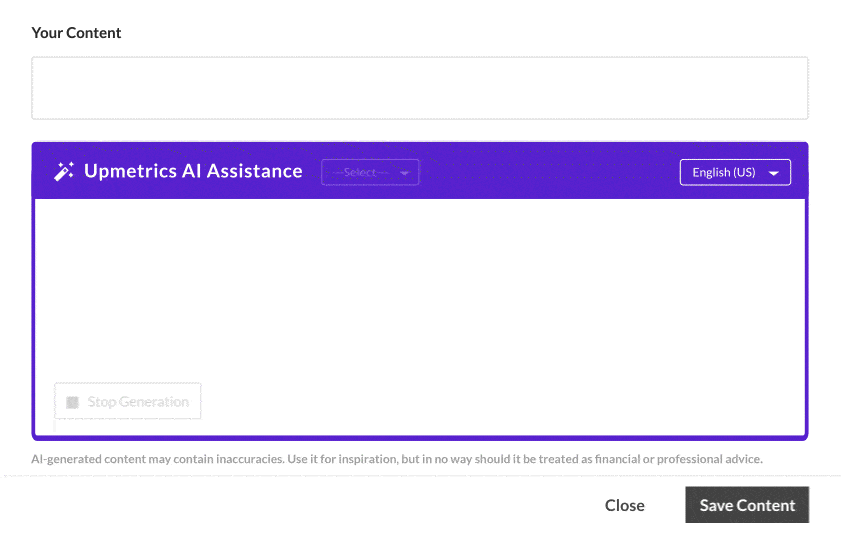Ever dreamt of starting your own volleyball club?
If the thought of creating a space where players can spike, set, and score ignites your passion, you’re in for an exhilarating journey!
Operating a volleyball club brings people together for the love of the game, promoting teamwork and friendly competition. But before you step onto the court, you need a business plan – a roadmap for your volleyball club business.
This guide will help you in navigating through every step of business plan writing. So, gear up, and let’s dive into the exciting world of the volleyball club business plan!
How to Write a Volleyball Club Business Plan?
Writing a volleyball club business plan is a crucial step toward the success of your business. Here are the key steps to consider when writing a business plan:
1. Executive Summary
An executive summary is the first section planned to offer an overview of the entire business plan. However, it is written after the entire business plan is ready and summarizes each section of your plan.
Here are a few key components to include in your executive summary:
Introduce your Business
Start your executive summary by briefly introducing your business to your readers. It may include the name of your volleyball club business, its location, when it was founded, etc.
A brief introduction to Elite Club
Elite is an organized volleyball club that aims to provide a friendly and competitive atmosphere for volleyball players of all skill levels. Located in bustling Denver, our club offers exciting opportunities to connect with other volleyball enthusiasts, play volleyball, and foster teamwork.
Participation in sports can create a strong sense of community, promote healthy lifestyles, and build lasting friendships. Whether you’re a beginner or a seasoned player, we have a spot for you on our team!
Market Opportunity
Summarize your market research, including market size, growth potential, and marketing trends. Highlight the opportunities in the market and how your business will fit in to fill the gap.
Volleyball Club Facilities
Highlight the volleyball club facilities you offer your clients. You should focus on any different facilities you offer from the competition.
Marketing & Sales Strategies
Outline your sales and marketing strategies—what marketing platforms you use, how you plan on acquiring customers, etc.
Financial Highlights
Briefly summarize your financial projections for the initial years of business operations. Include any capital or investment requirements, associated startup costs, projected revenues, and profit forecasts.
Call to Action
Summarize your executive summary section with a clear CTA, for example, inviting potential partners or investors to discuss the potential business investment.
Ensure your executive summary is clear, concise, easy to understand, and jargon-free.
Say goodbye to boring templates
Build your business plan faster and easier with AI
Plans starting from $14/month

2. Business Overview
The business overview section of your business plan offers detailed information about your business. The details you add will depend on how important they are to your business. Yet, business name, location, business history, and future goals are some of the foundational elements you must consider adding to this section.
Business Description
Describe what kind of volleyball club business you run and the name of it. You may specialize in one of the following volleyball club businesses:
- Youth development club
- Recreational club
- Professional club
- Beach volleyball club
Describe the legal structure of your volleyball club business, whether it is a sole proprietorship, LLC, partnership, or others. Explain where your business is located and why you selected the place.
Owners
List the names of your volleyball club business’s founders or owners. Describe what shares they own and their responsibilities for efficiently managing the business.
Mission Statement
Summarize your business’ objective, core principles, and values in your mission statement. This statement needs to be memorable, clear, and brief.
Business History
If you’re an established volleyball club service provider, briefly describe your business history, like—when it was founded, how it evolved over time, etc. Additionally, If you have received any awards or recognition for excellent work, describe them. For example,

Future Goals
It’s crucial to convey your aspirations and vision. Mention your short-term and long-term goals; they can be specific targets for revenue, market share, or expanding your services.
This section should provide a thorough understanding of your business, its history, and its plans. Keep this section engaging, precise, and to the point.
3. Market Analysis
The market analysis section of your business plan should offer a thorough understanding of the industry with the target market, competitors, and growth opportunities. You should include the following components in this section.
Target market
Start this section by describing your target market. Define your ideal customer and explain what types of services they prefer. Creating a buyer persona will help you easily define your target market to your readers. For example,

Market size and growth potential
Describe your market size, growth potential, and whether you will target a niche or broader market.
For example, the 2022 valuation of the worldwide volleyball market stood at $316.71 million, with an anticipated growth rate of 6.87% over the forecast period. It is expected to lead to a market size of USD 471.81 million by 2028.
Competitive Analysis
Identify and analyze your direct and indirect competitors. Identify their strengths and weaknesses, and describe what differentiates your volleyball club facilities from them. Point out how you have a competitive edge in the market.
Market Trends
Analyze emerging trends in the industry, such as technology disruptions, changes in customer behavior or preferences, etc. Explain how your business will cope with all the trends.
For instance, technological integration, focus on fitness & health, event hosting, or use of digital platforms are some of the market trends for a volleyball club.
Regulatory Environment
List regulations and licensing requirements that may affect your volleyball club business, such as youth protection laws, insurance requirements, facility compliance, contractual agreements, etc.
Here are a few tips for writing the market analysis section of your volleyball club business plan:
- Conduct market research, industry reports, and surveys to gather data.
- Provide specific and detailed information whenever possible.
- Illustrate your points with charts and graphs.
- Write your business plan keeping your target audience in mind.
4. Volleyball Club Facilities
This section should describe the specific services and products offered to customers. To write this section should include the following:
Describe all your facilities
Mention the volleyball club facilities your business will offer. This list may include,
- Indoor volleyball courts
- Outdoor volleyball courts
- Clubhouse or office space
- Training areas
- Spectator seating
- Equipment storage
- Multi-purpose rooms
- Snacks bar or cafeteria
Quality measures
This section should explain how you maintain quality standards and consistently provide the highest quality service.
It may include court maintenance, equipment checks, training program quality, coach qualification, safety protocols, facility cleanliness, etc.
In short, this section of your volleyball club plan must be informative, precise, and client-focused. By providing a clear and compelling description of your offerings, you can help potential investors and readers understand the value of your business.
5. Sales And Marketing Strategies
Writing the sales and marketing strategies section means a list of strategies you will use to attract and retain your clients. Here are some key elements to include in your sales & marketing plan:
Unique Selling Proposition (USP)
Define your business’s USPs depending on the market you serve, the equipment you use, and the unique services you provide. Identifying USPs will help you plan your marketing strategies. For example,
Unique selling proposition for Elite Club
Welcome to Elite Club, where the excitement of volleyball meets a commitment to excellence. Our volleyball club stands out as the go-to destination for passionate players and aspiring athletes.
What sets us apart is our holistic approach to player development. Our tailored programs not only refine skills but also focus on character and teamwork. With cutting-edge training facilities boasting state-of-the-art courts and specialized equipment, we offer an immersive experience to elevate your game. Our coaching staff comprises seasoned professionals dedicated to shaping well-rounded individuals.
At Elite Spike Dynamics, we foster a vibrant community, encouraging friendships and connections beyond the court. With programs for all skill levels, strategic partnerships, and a commitment to performance, we are more than a club; we are a dynamic force propelling players to reach new heights in the exciting world of volleyball.
Pricing Strategy
Describe your pricing strategy—how you plan to price your facilities and stay competitive in the local market. You can mention any discounts you plan to attract new customers to your club.
Sales and marketing strategies
Outline the strategies you will implement to maximize your sales and market your facilities to stay competitive in the local market. Some of the strategies are targeted advertising, free trial sessions, partnering with other schools and sports organizations, influencer collaboration, etc.
Customer Retention
Describe your customer retention strategies and how you plan to execute them. For instance, introducing loyalty programs, discounts on annual membership, personalized service, etc.
Overall, this section of your volleyball club business plan should focus on customer acquisition and retention.
Have a specific, realistic, and data-driven approach while planning sales and marketing strategies for your volleyball club business, and be prepared to adapt or make strategic changes in your strategies based on feedback and results.
6. Operations Plan
The operations plan section of your business plan should outline the processes and procedures involved in your business operations, such as staffing requirements and operational processes. Here are a few components to add to your operations plan:
Staffing & Training
Mention your business’s staffing requirements, including the number of employees or trainers staff needed. Include their qualifications, the training required, and the duties they will perform.
Operational Process
Outline the processes and procedures you will use to run your volleyball club business. Your operational processes may include establishing club structure, facility & equipment management, financial management, etc.
Equipment
Include the list of equipment and machinery required for the volleyball club, such as nets & antennas, court boundary lines, ball storage and courts, poles & padding, etc.
Adding these components to your operations plan will help you lay out your business operations, which will eventually help you manage your business effectively.
7. Management Team
The management team section provides an overview of your volleyball club business’s management team. This section should provide a detailed description of each manager’s experience and qualifications, as well as their responsibilities and roles.
Founders/CEO
Mention the founders and CEO of your volleyball club business, and describe their roles and responsibilities in successfully running the business.
Key managers
Introduce your management and key members of your team, and explain their roles and responsibilities.
It should include, key executives(e.g. COO, CMO.), senior management, and other department managers (e.g. customer services manager.) involved in the volleyball club business operations, including their education, professional background, and any relevant experience in the industry.
Organizational structure
Explain the organizational structure of your management team. Include the reporting line and decision-making hierarchy.
Compensation Plan
Describe your compensation plan for the management and staff. Include their salaries, incentives, and other benefits.
Advisors/Consultants
Mentioning advisors or consultants in your business plans adds credibility to your business idea.
So, if you have any advisors or consultants, include them with their names and brief information consisting of roles and years of experience.
This section should describe the key personnel for your volleyball club business, highlighting how you have the perfect team to succeed.
8. Financial Plan
Your financial plan section should provide a summary of your business’s financial projections for the first few years. Here are some key elements to include in your financial plan:
Profit & loss statement
Describe details such as projected revenue, operational costs, and service costs in your projected profit and loss statement. Make sure to include your business’s expected net profit or loss.
Cash flow statement
The cash flow for the first few years of your operation should be estimated and described in this section. This may include billing invoices, payment receipts, loan payments, and any other cash flow statements.
Balance Sheet
Create a projected balance sheet documenting your volleyball club business’s assets, liabilities, and equity.
Break-even point
Determine and mention your business’s break-even point—the point at which your business costs and revenue will be equal.
This exercise will help you understand how much revenue you need to generate to sustain or be profitable.
Financing Needs
Calculate costs associated with starting a volleyball club business, and estimate your financing needs and how much capital you need to raise to operate your business. Be specific about your short-term and long-term financing requirements, such as investment capital or loans.
Be realistic with your financial projections, and make sure you offer relevant information and evidence to support your estimates.
9. Appendix
The appendix section of your plan should include any additional information supporting your business plan’s main content, such as market research, legal documentation, financial statements, and other relevant information.
- Add a table of contents for the appendix section to help readers easily find specific information or sections.
- In addition to your financial statements, provide additional financial documents like tax returns, a list of assets within the business, credit history, and more. These statements must be the latest and offer financial projections for at least the first three or five years of business operations.
- Provide data derived from market research, including stats about the industry, user demographics, and industry trends.
- Include any legal documents such as permits, licenses, and contracts.
- Include any additional documentation related to your business plan, such as product brochures, marketing materials, operational procedures, etc.
Use clear headings and labels for each section of the appendix so that readers can easily find the necessary information.
Remember, the appendix section of your volleyball club business plan should only include relevant and important information supporting your plan’s main content.
The Quickest Way to turn a Business Idea into a Business Plan
Fill-in-the-blanks and automatic financials make it easy.
Summary
This sample volleyball club business plan will provide an idea for writing a successful volleyball club plan, including all the essential components of your business.
After this, if you still need clarification about writing an investment-ready business plan to impress your audience, download our volleyball club business plan pdf.




